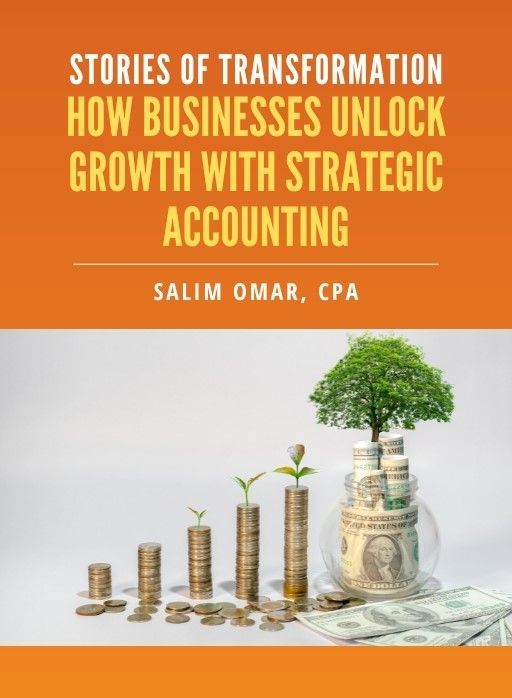Timing Your Contributions: Avoid Last-Minute Mistakes That Cost You
Most business owners think they have plenty of time to make their retirement contributions — right up until December turns into panic season. You’re busy running payroll, finalizing invoices, and juggling year-end reports, and suddenly your “we’ll handle it later” contribution plan becomes another missed opportunity.
Here’s the truth: timing your contributions isn’t just about compliance — it’s about control. Miss the window, and you’re not only losing potential deductions — you’re giving up compounding growth, flexibility, and strategic leverage that could strengthen your bottom line.
At Straight Talk CPAs, we’ve seen what happens when timing slips — and we’ve seen the financial upside of getting it right. Let’s walk through how timing affects your taxes, your cash flow, and your ability to plan smarter for the year ahead.
Why Contribution Timing Matters More Than You Think
Retirement plans, profit-sharing, and owner contributions all operate under strict deadlines. But it’s not just when you fund them — it’s how consistently you plan them throughout the year.
When contributions are handled proactively:
- You
avoid last-minute cash flow strain by trying to fund a lump sum in December.
- You
maximize the compounding benefit by getting your funds invested sooner.
- You strategically align deductions with your business cycle to smooth taxable income.
When they’re handled reactively, it’s a scramble — mistakes happen, and those mistakes cost real money.
According to the IRS, one of the top reasons small businesses overpay taxes is
poor contribution timing — especially missed or partial deposits on owner 401(k)s, SEP IRAs, and profit-sharing plans.
The Common Timing Mistakes That Cost Businesses Thousands
1. Waiting Until Tax Time to “Catch Up”
If you’re only thinking about retirement contributions when your CPA files your return, you’ve already missed the best leverage point. Contributions made early in the year grow longer, reduce taxable income sooner, and eliminate the December cash squeeze.
Fix: Set a recurring quarterly review to evaluate contribution levels with your CPA — not just in March or April.
2. Ignoring Payroll Deadlines
If you have a 401(k) or SIMPLE plan, employee deferrals have strict deposit deadlines. Missing even one can disqualify contributions for the year or trigger penalties.
Fix: Automate contributions directly through payroll so they fund on time — every time.
3. Misaligning Cash Flow and Contribution Cycles
A profitable year doesn’t always mean liquid cash in December. Many owners overcommit to last-minute contributions and then scramble for liquidity.
Fix: Spread contributions throughout the year. Smaller, consistent deposits protect cash flow while still maximizing tax benefits.
4. Not Coordinating Between CPA and Payroll Provider
Too often, the CPA and the payroll company operate in separate silos. Timing mismatches between their schedules cause contribution errors or missed filings.
Fix: Loop both teams into your year-end planning early. A quick coordination meeting can prevent costly oversights.
5. Forgetting the Filing Deadline Grace Period
Many plans allow extended deadlines for employer contributions — but not for employee ones. Knowing the difference could mean thousands in saved deductions.
Fix: Keep a shared timeline or checklist with your CPA that outlines all cutoff dates — IRS, plan, and payroll.
Proactive Planning = Strategic Growth
One of our long-term clients — a mid-size architecture firm — used to fund retirement contributions every March, just before tax filing.
When we helped them move to a quarterly contribution system, they:
- Freed up year-end cash by 20%
- Earned nearly $18,000 more in compounded returns over two years
- Reduced last-minute administrative stress entirely
Timing didn’t just save them taxes — it created a
predictable rhythm for financial decisions.
The Smart Way to Time Contributions
Here’s how high-performing businesses stay ahead:
1. Set Deadlines Backward: Start from your plan cutoff date and set internal funding goals 30–45 days earlier.
2. Build Contributions Into Payroll: Treat it like any other recurring expense. Predictable, automated, and stress-free.
3. Schedule Quarterly CPA Reviews: Don’t wait for tax season to make contribution adjustments.
4. Match Contributions With Profit Cycles: Align funding with your strongest months to keep cash flow balanced.
5. Document Everything: Keep clear records of contribution dates, authorization approvals, and payroll confirmations.
A good rule of thumb:
If you’re rushing to contribute, you’re already too late.
Final Thoughts
Deadlines are easy to miss — but the cost of missing them goes far beyond penalties. You lose tax savings, compounding power, and confidence in your financial systems.
The most successful business owners don’t make contributions once a year; they build them into the rhythm of their operations. That’s how you turn compliance into opportunity.
At Straight Talk CPAs, we help business owners build proactive contribution calendars that keep their plans compliant, optimized, and tax-efficient all year long.
👉
Stop letting timing mistakes eat into your savings. Let’s map your contribution strategy before the year ends — and make every dollar count.
Free eBook:
Stories of Transformation


Salim is a straight-talking CPA with 30+ years of entrepreneurial and accounting experience. His professional background includes experience as a former Chief Financial Officer and, for the last twenty-five years, as a serial 7-Figure entrepreneur.





